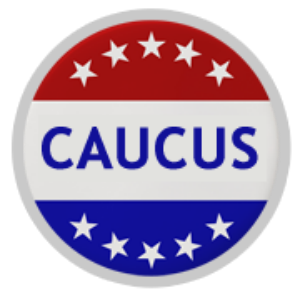 The November 6 general election is still eight months away, but candidates have already been on the trail for months: meeting activists, scoring endorsements and raising money.
The November 6 general election is still eight months away, but candidates have already been on the trail for months: meeting activists, scoring endorsements and raising money.
They’re preparing for a pivotal 2018 cycle in Minnesota, an election that will include both U.S. Senate seats, an open governor’s race, three other constitutional offices, eight congressional seats, and the entire 134-seat Minnesota House of Representatives. With so much at stake, it will be a hard-fought, high-dollar election, and the first major step is just around the corner: Precinct caucuses on February 6.
The precinct caucuses on February 6 are your chance to have a say in setting your party’s platform, select delegates who may eventually go on to the party’s endorsing conventions, and cast your preferential ballot for which candidate for governor you feel your party should support.
Read on for a Q&A about how the precinct caucuses work and how you can participate.
1. When and where do I caucus?
The 2018 precinct caucuses will be on Tuesday, February 6 at 7:00 p.m.
For Republican and DFL caucus locations, use the online caucus finder here: http://caucusfinder.sos.state.mn.us/
Note that caucus locations will vary from where you usually vote in a general election.
If you’d prefer to caucus with a minor party, you can get more information on how to find your caucus location here.
2. What is a caucus?
Precinct caucuses are meetings run by Minnesota’s political parties. They are the first in a series of meetings where parties may endorse candidates, select delegates, and set goals and values (called party platforms).
In 2018, one part of the precinct caucuses will be to cast a preference ballot for the person you want your political party to support for Governor.
3. Who can attend?
To participate, you must be eligible to vote in the November general election (you do NOT need to be a registered voter) and live in the precinct. You also must generally agree with the principles of the political party hosting the caucus. You do NOT need to prove that you are a Republican or Democrat to participate in either party’s caucus.
4. What happens at a caucus?
Each political party runs their caucus meetings a little differently. Check with your political party if you have specific questions. Generally, there are four main activities at a caucus:
- Choose volunteers who will organize political activities in the precinct. This could include maintaining contact lists, holding political meetings, and helping with campaign efforts.
- Vote for the person you want the party to support for Governor. This is called the preference ballot. The results help gauge support for candidates.
- Discuss issues and ideas for the party to support. You can present an issue or idea for the party to support, called a resolution. If you convince other attendees to support your resolution, it will be taken to the next political convention. Eventually, your resolution could become part of the official party platform.
- Choose delegates who will endorse candidates at future conventions. At future conventions, party delegates will endorse state and federal candidates, including for Governor. Political parties have different ways of choosing delegates at the precinct level caucus—contact your party for more information.
If all you want to do is cast your preference vote for governor and leave, you can absolutely do that. You are not required to stay for the entire caucus. However, if you are interested in getting more involved with the party, there will be people at your caucus location happy to share more information.
5. Will anyone know who I vote for?
No. The Minnesota Caucus is conducted by secret ballot.
6. Why should I care?
Decisions about your government are made by those who show up – so be sure to take the chance to attend your precinct caucus. If you don’t caucus, you’re letting someone else decide who your party’s candidate is going to be.




